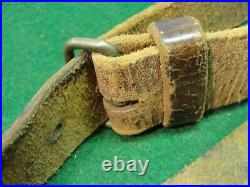

It utilized a cock-on-closing action, which improved the rate of fire from the standard Mauser cock-on-open design. The Arisaka was based around the basic German Mauser design, albeit with some local alterations. The calipers on the sides are to determine the speed of the targeted aircraft. The Flip-up Anti-aircraft rear sights of a Type 99 rifle. The Royal Thai Army received Japanese rifles of all types after 1945 and converted some short Type 99 rifles to fire the U.S.30-06 cartridge during the early 1950s. Indonesian forces used a large amount of Type 99 rifles in the fighting against the Dutch during the Indonesian National Revolution (1945–1949).

30-06 and 7.62 NATO have also been performed by civilians, often along with sporterising modifications.Īfter 1946, the Republic of China re-chambered large amounts of Type 99 rifles to fire the 8×57 IS cartridge. Accuracy suffered, due to the difference in cartridges, rifling rate and characteristics, but they were nonetheless functional. These rifles were fitted with a lengthened magazine well and had a small notch cut in the top of the receiver to accommodate the. "Apparently" intended for the South Korean gendarmerie, few rifles appear to have been issued at the end of the war in 1953.

Other users ĭuring the Korean War, approximately 126,500 short and 6650 long Type 99 Rifles were re-chambered under American supervision at the Tokyo arsenal to fire the then-standard. The rifle has no flip-up anti-aircraft rearsight nor monopod. All of these features were abandoned by mid-war.Ī Type 99 Short rifle made after mid-war (also known as the Type 99 "last ditch" rifle). The Type 99 was the first mass-produced infantry rifle to have a chrome lined bore to ease cleaning. The standard rifle also came with a wire monopod and an anti-aircraft sighting device. The Type 99 was produced in four versions, the regular issue Type 99 Short Rifle, the Type 99 Long Rifle (a limited production variant) and takedown Type 2 Paratroop Rifle and the Sniper Rifle Type 99. They are generally as crude as the 1945 dated Mauser K98k of Germany, or worse. Late war rifles are often called "Last Ditch" or "Substitute Standard" due to their crudeness of finish. As the war progressed, more and more cost saving steps were introduced in order to speed up production. However, the outbreak of the Pacific war never allowed the army to completely replace the Type 38 and so the IJA used both rifles during the war. The IJA had intended to completely replace the Type 38 with the Type 99 by the end of the war. Seven arsenals were located in Japan, with the other two located at Mukden in China and Jinsen in Korea. The Type 99 was produced at nine different arsenals. The Imperial Japanese Army (IJA) developed the Type 99 based on the Type 38 rifle but with a caliber of 7.7mm.

During the Second Sino-Japanese War in the 1930s, the Japanese soon found that the 8×57mm IS cartridge the Chinese used was superior to the 6.5×50mm cartridge of the Type 38 rifle, necessitating the development of a new weapon to replace the outclassed Type 38.


 0 kommentar(er)
0 kommentar(er)
